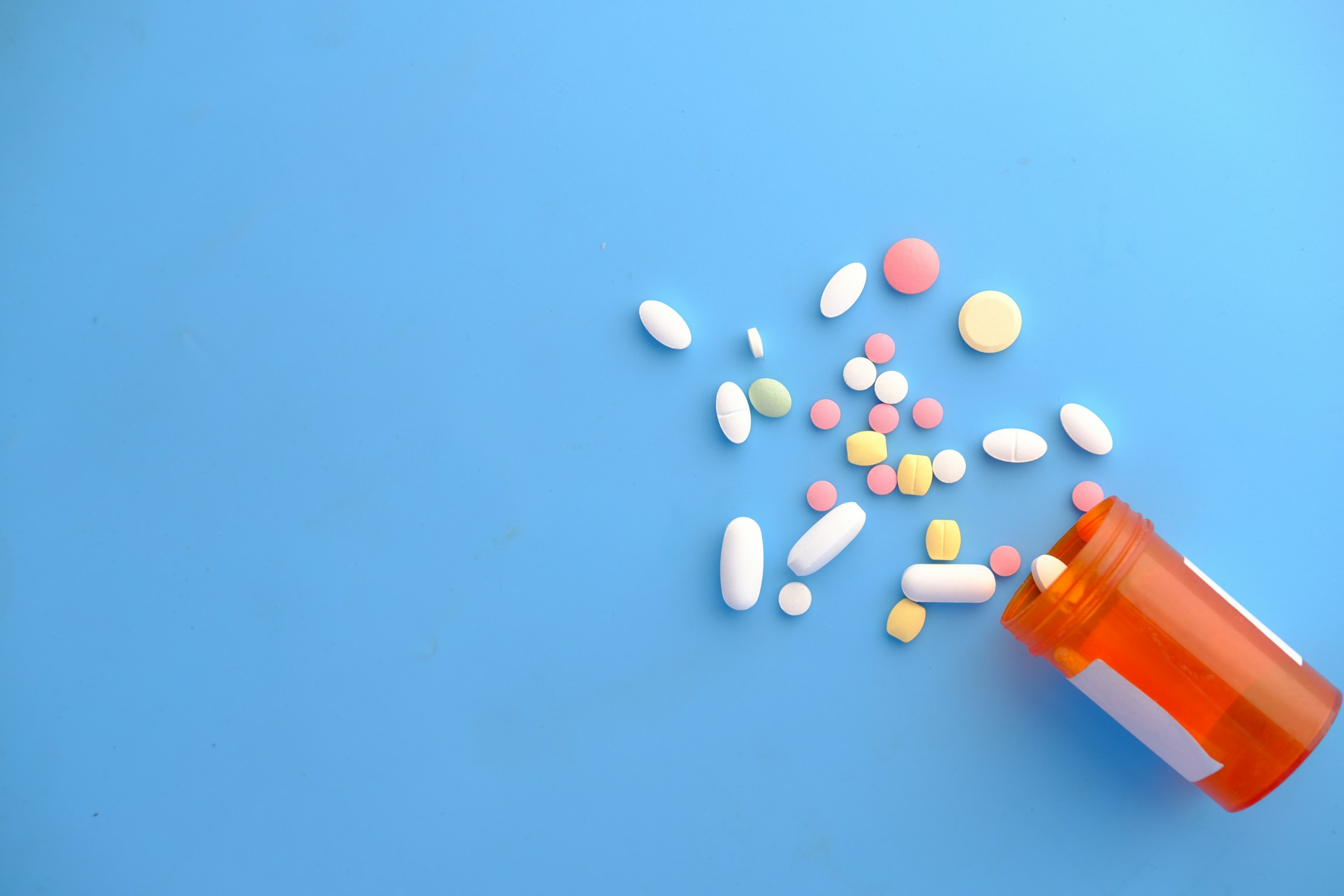What are the options for PMDS treatment? Nutrition, medication & therapies
PMDS can make your pre-menstrual days an emotional storm, but you can learn to cope better with the symptoms. There are effective medical aids, nutritional tips and natural approaches that can noticeably improve your well-being. Find out in this article what options are available, what really helps and find ways that suit you and your life.

Medical options
There are various options for medical PMDS treatment:
- Antidepressants (SSRIs) are considered standard because they can alleviate mood swings and anxiety, but they have side effects and do not work the same for everyone. They can be taken daily or only in the second half of the cycle.
- Hormonal preparations stabilize the hormonal situation and primarily alleviate physical symptoms, but their effect varies from person to person.
- GnRH agonists put the body into an artificial menopause and are only used in severe cases.
- Surgery: Removal of the ovaries is very rare and only an option in extremely refractory cases. [14,15]

Cravings, mood & co - why nutrition is so important for PMDS
Diet plays a major role. Studies show that women with PMDS eat more calories, fats and sugar in the second half of their cycle. This is usually caused by serotonin dysregulation, which increases cravings. The hormone leptin also fluctuates, which can promote binge eating. Processed foods exacerbate depressive symptoms, creating a vicious circle! A balanced diet with few processed foods helps to break this cycle and alleviate symptoms. [12]
Food for the nerves - what can really help you with PMDS
Good news: Certain dietary supplements can noticeably alleviate PMS/PMDS symptoms! Various high-quality studies have confirmed that natural substances can help alleviate premenstrual symptoms when taken regularly.
- Ginkgo Biloba: Helps above all against mood swings and depressive moods by balancing certain messenger substances in the brain and reducing inflammation.
- Vitamin B1 (thiamine): Supports mental and physical health and has a positive effect on mood, relaxation and even sleep quality.
- Vitamin B6: Plays a central role in the production of serotonin and can effectively alleviate PMS and PMDS symptoms such as depressive moods and concentration problems. Women taking oral contraceptives in particular should make sure they have a sufficient vitamin B6 intake. Vitamin B6 is abundant in foods such as liver, salmon, tuna and chickpeas.
- Camomile: Has a calming and antispasmodic effect. Studies show that it is even more effective than some painkillers. Caution with increased menstrual bleeding as a possible side effect of very high consumption.
- Ginger: Known for its anti-inflammatory and pain-relieving properties. Ginger has been proven to help with physical and emotional PMS symptoms. Occasionally, however, mild nausea may occur (1 patient out of 70)
- Monk's pepper (Vitex Agnus Castus): Very popular for hormonal complaints, as it balances the dopamine balance and significantly reduces PMS symptoms - in particular, it has been shown to reduce the unpleasant breast tenderness in the premenstrual phase.
- Lemon balm (Melissa officinalis): Has a calming effect on the central nervous system and thus effectively alleviates stress-related PMS symptoms.
- Wheat germ extract: Significantly reduces both physical and psychological symptoms associated with menstruation.
- Turmeric (curcumin): A real all-rounder - curcumin has antidepressant and anti-inflammatory effects and even regulates important neurotransmitters in the brain, which can alleviate PMDS symptoms.
- Vitamin D3: Has been shown to improve PMDS symptoms by acting as an antioxidant and reducing inflammation in the body.
- Aniseed and the Iranian plant Echium amoenum (Gole gauzaban): Both plants have an estrogen-like effect and can effectively alleviate PMS symptoms.
- Omega-3 fatty acids (EPA and DHA): Omega-3 fatty acids play a key role in reducing inflammation in the body and have been shown to have positive effects on mood and anxiety. Numerous studies and meta-analyses confirm that EPA and DHA can effectively alleviate depressive symptoms and anxiety. In particular, a diet such as the Mediterranean diet, which is rich in omega-3 fatty acids, can help to effectively reduce psychological symptoms in PMDS.
- Iron: An iron deficiency can exacerbate depressive moods and fatigue. Women who are menstruating are particularly at risk. Regular consumption of iron-rich foods such as pulses, spinach, lentils and lean meat is a good way to prevent iron deficiency and alleviate PMS symptoms.
In general, dietary supplements are a gentle and effective support to relieve PMS and PMDS symptoms. However, it is important to discuss them with a healthcare professional before taking them. [12-14]

Alternative therapies and psychotherapy for PMDS - what's the real benefit?
In addition to medication and dietary supplements, there are some alternative and psychotherapeutic approaches that have shown promise for PMDS:
Acupuncture and acupressure
Acupuncture and acupressure may help to relieve physical and psychological symptoms of PMDS. An analysis showed that acupuncture was more effective than sham treatment, although the study quality was rather low. Overall, acupuncture could be worth a try [14].
Reflexology (reflexology)
Reflexology can also alleviate symptoms - especially when used regularly over a longer period of time. A meta-analysis showed that symptoms continued to improve with increasing duration [14].
Yoga and relaxation techniques
In small studies, yoga has improved anxiety, depressive moods and sleep problems. Which yoga practices are particularly effective still needs to be researched in more detail. Similar effects have also been observed with Pilates, swimming and Baduanjin [14].
Sport and physical activity
Regular exercise has been shown to have a positive effect on PMDS. In a meta-analysis of 15 studies, training such as aerobics or endurance significantly improved symptoms. Generally speaking, exercise and relaxation can alleviate PMS and PMDS symptoms [14].
Psychoeducation - knowledge is power!
Simply understanding your own symptoms can help. Studies show that psychoeducation can reduce anxiety, irritability and physical symptoms. However, depressive moods and interpersonal sensitivity are less affected [17]. Women who were also informed about the positive aspects of the premenstrual phase were more likely to perceive positive effects - a holistic view therefore strengthens self-confidence in dealing with PMDS [12,16].
Psychotherapy - particularly effective: cognitive behavioral therapy [14]
Cognitive behavioral therapy (CBT) is one of the best-studied methods for PMDS. It has been shown to reduce anxiety and depressive moods and works as individual, group or online therapy. Mindfulness-based CBT has also been shown to be helpful [14]. Studies show that CBT can achieve similar effects to antidepressants; no additional benefit has yet been found when used in combination [18].
Remember: Your PMDS treatment can be as individual as you are - take your time, listen to your body and get help if you need it.
Remember: Your PMDS treatment can be as individual as you are - take your time, listen to your body and get help if you need it.

Sources
- Dennerstein, L., Lehert, P., & Heinemann, K. (2012). Epidemiology of premenstrual symptoms and disorders. Menopause international, 18(2), 48-51. https://doi.org/10.1258/mi.2012.012013
- Lanza di Scalea, T., & Pearlstein, T. (2019). Premenstrual Dysphoric Disorder (Premenstrual Dysphoric Disorder). Medical Clinics of North America, 103(4), 613-628. https://doi.org/10.1016/j.mcna.2019.02.007
- Reilly, T. J., Patel, S., Unachukwu, I. C., Knox, C.-L., Wilson, C. A., Craig, M. C., Schmalenberger, K. M., Eisenlohr-Moul, T. A., & Cullen, A. E. (2024). The prevalence of premenstrual dysphoric disorder: Systematic review and meta-analysis. Journal of Affective Disorders, 349, 534-540. https://doi.org/10.1016/j.jad.2024.01.066
- Yonkers, K. A., & Simoni, M. K. (2018). Premenstrual disorders. American Journal of Obstetrics & Gynecology, 218(1), 68-74. https://doi.org/10.1016/j.ajog.2017.05.045
- American Psychiatric Association, 2013 DSM-5 diagnostic classification. In: Diagnostic and Statistical Manual of Mental Disorders.[https://doi.org/10.1176/appi.](https://doi.org/10.1176/appi) books.9780890425596.x00diagnosticclassification.
- Reed, G. M., First, M. B., Kogan, C. S., Hyman, S. E., Gureje, O., Gaebel, W., Maj, M., Stein, D. J., Maercker, A., Tyrer, P., Claudino, A., Garralda, E., Salvador-Carulla, L., Ray, R., Saunders, J. B., Dua, T., Poznyak, V., Medina-Mora, M. E., Pike, K. M., Ayuso-Mateos, J. L., Kanba, S., Keeley, J. W., Khoury, B., Krasnov, V. N., Kulygina, M., Lovell, A. M., de Jesus Mari, J., Maruta, T., Matsumoto, C., Rebello, T. J., Roberts, M. C., Robles, R., Sharan, P., Zhao, M., Jablensky, A., Udomratn, P., Rahimi-Movaghar, A., Rydelius, P. A., Bährer-Kohler, S., Watts, A. D., & Saxena, S. (2019). Innovations and changes in the ICD-11 classification of mental, behavioral, and neurodevelopmental disorders. World Psychiatry, 18(1), 3-19. https://doi.org/10.1002/wps.20611
- Endicott, J., Nee, J. & Harrison, W. Daily Record of Severity of Problems (DRSP): reliability and validity*.Arch Womens Ment Health* 9, 41-49 (2006). https://doi.org/10.1007/s00737-005-0103-y
- Heinemann, L. A., Minh, T. D., Filonenko, A., & Uhl-Hochgräber, K. (2010). Exploratory evaluation of the impact of severe premenstrual disorders on absenteeism and productivity at work. Women's health issues : official publication of the Jacobs Institute of Women's Health, 20(1), 58-65. https://doi.org/10.1016/j.whi.2009.09.005
- Ussher, J. M., & Perz, J. (2017). Evaluating the relative effectiveness of cognitive behavioral therapy (CBT) for couples with premenstrual disorders (PMDs) compared with single CBT and a waitlist control: a randomized controlled trial. PLOS ONE, 12(4), e0175068. https://doi.org/10.1371/journal.pone.0175068
- Dorn, B., Schwenkhagen, A., & Rohde, A. (2023). PMDS as a challenge: Premenstrual dysphoric disorder as the most severe form of PMS (2nd ed.). Kohlhammer.
- Chan, J.-H., Lo, C., Hsu, C.-D., Chiu, C.-C., Huang, M.-C., Liao, S.-C., Chen, I.-M., Chen, W.-Y., Chen, H.-C., & Kuo, P.-H. (2021). Premenstrual dysphoric symptoms and lifetime suicidal experience in patients with mood disorders. General Hospital Psychiatry, 71, 82-87. https://doi.org/10.1016/j.genhosppsych.2021.04.009
- Trezza, A., & Krabbe, J. P. (2022). A vicious cycle: Using nutrition to combat the behavioral impact of premenstrual syndrome and premenstrual dysphoric disorder. Nutritional Foundations, 1, 1-12.
- Sultana, A., Heyat, M. B. B., Rahman, K., Kunnavil, R., Fazmiya, M. J. A., Akhtar, F., Sumbul, Vidal Mazón, J. L., Rodríguez, C. L., & De La Torre Díez, I. (2022). A Systematic Review and Meta-Analysis of Premenstrual Syndrome with Special Emphasis on Herbal Medicine and Nutritional Supplements. Pharmaceuticals, 15(11), 1371. https://doi.org/10.3390/ph15111371
- Carlini SV, Lanza di Scalea T, McNally ST, Lester J, Deligiannidis KM. Management of Premenstrual Dysphoric Disorder: A Scoping Review. Int J Womens Health. 2022;14:1783-1801 https://doi.org/10.2147/IJWH.S297062.-- for Alternative Therapies & Psychotherapy
- Modzelewski, S., Oracz, A., Żukow, X., Iłendo, K., Śledzikowka, Z., & Waszkiewicz, N. (2024). Premenstrual syndrome: New insights into etiology and review of treatment methods. Frontiers in Psychiatry, 15. https://doi.org/10.3389/fpsyt.2024.1363875
- Kaiser, G., Schormann, A., Kues, J. N., & Weise, C. (2018). Knowledge about positive premenstrual changes and somatosensory amplification increase the report of positive premenstrual changes: An experimental study. Psychotherapy and Psychosomatics, 87(4), 237-239. https://doi.org/10.1159/000489499
- Taghizadeh, Z., Shirmohammadi, M., Feizi, A., & Arbabi, M. (n.d.). The effect of cognitive behavioral psycho-education on premenstrual syndrome and related symptoms.
- Hunter, M. S., Ussher, J. M., Browne, S. J., Cariss, M., Jelley, R., & Katz, M. (2002). A randomized comparison of psychological (cognitive behavior therapy), medical (fluoxetine) and combined treatment for women with premenstrual dysphoric disorder. Journal of Psychosomatic Obstetrics & Gynecology, 23(3), 193-199. https://doi.org/10.3109/01674820209074672

.jpg)


